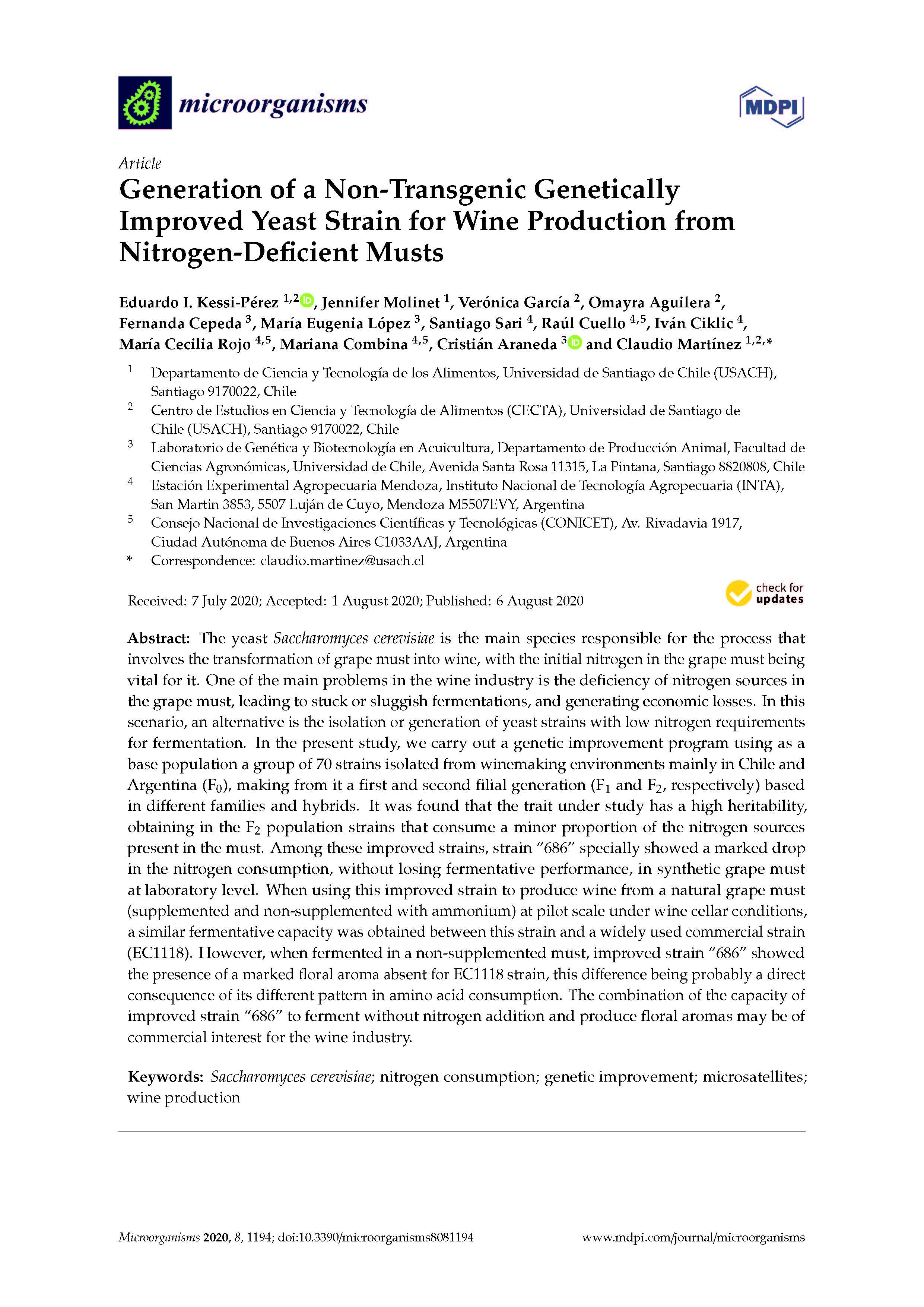View Item
- xmlui.general.dspace_homeCentros Regionales y EEAsCentro Regional Mendoza - San JuanEEA MendozaArtículos científicosxmlui.ArtifactBrowser.ItemViewer.trail
- DSpace Home
- Centros Regionales y EEAs
- Centro Regional Mendoza - San Juan
- EEA Mendoza
- Artículos científicos
- View Item
Generation of a non-transgenic genetically improved yeast strain for wine production from nitrogen-deficient musts
Abstract
The yeast Saccharomyces cerevisiae is the main species responsible for the process that involves the transformation of grape must into wine, with the initial nitrogen in the grape must being vital for it. One of the main problems in the wine industry is the deficiency of nitrogen sources in the grape must, leading to stuck or sluggish fermentations, and generating economic losses. In this scenario, an alternative is the isolation or generation of yeast
[ver mas...]
The yeast Saccharomyces cerevisiae is the main species responsible for the process that involves the transformation of grape must into wine, with the initial nitrogen in the grape must being vital for it. One of the main problems in the wine industry is the deficiency of nitrogen sources in the grape must, leading to stuck or sluggish fermentations, and generating economic losses. In this scenario, an alternative is the isolation or generation of yeast strains with low nitrogen requirements for fermentation. In the present study, we carry out a genetic improvement program using as a base population a group of 70 strains isolated from winemaking environments mainly in Chile and Argentina (F0), making from it a first and second filial generation (F1 and F2, respectively) based in different families and hybrids. It was found that the trait under study has a high heritability, obtaining in the F2 population strains that consume a minor proportion of the nitrogen sources present in the must. Among these improved strains, strain “686” specially showed a marked drop in the nitrogen consumption, without losing fermentative performance, in synthetic grape must at laboratory level. When using this improved strain to produce wine from a natural grape must (supplemented and non-supplemented with ammonium) at pilot scale under wine cellar conditions, a similar fermentative capacity was obtained between this strain and a widely used commercial strain (EC1118). However, when fermented in a non-supplemented must, improved strain “686” showed the presence of a marked floral aroma absent for EC1118 strain, this difference being probably a direct consequence of its different pattern in amino acid consumption. The combination of the capacity of improved strain “686” to ferment without nitrogen addition and produce floral aromas may be of commercial interest for the wine industry.
[Cerrar]

Author
Kessi Pérez, Eduardo Ignacio;
Molinet, Jennifer;
García, Verónica;
Aguilera, Omayra;
Cepeda, Fernanda;
López, María Eugenia;
Sari, Santiago Eduardo;
Cuello, Raúl Andrés;
Ciklic, Ivan Francisco;
Rojo, Cecilia;
Combina, Mariana;
Araneda, Cristián;
Martínez, Claudio;
Fuente
Microorganisms 8 (8) : 1194. (2020)
Date
2020
Editorial
MDPI
ISSN
2076-2607
Formato
pdf
Tipo de documento
artículo
Palabras Claves
Derechos de acceso
Abierto
 Excepto donde se diga explicitamente, este item se publica bajo la siguiente descripción: Creative Commons Attribution-NonCommercial-ShareAlike 2.5 Unported (CC BY-NC-SA 2.5)
Excepto donde se diga explicitamente, este item se publica bajo la siguiente descripción: Creative Commons Attribution-NonCommercial-ShareAlike 2.5 Unported (CC BY-NC-SA 2.5)


